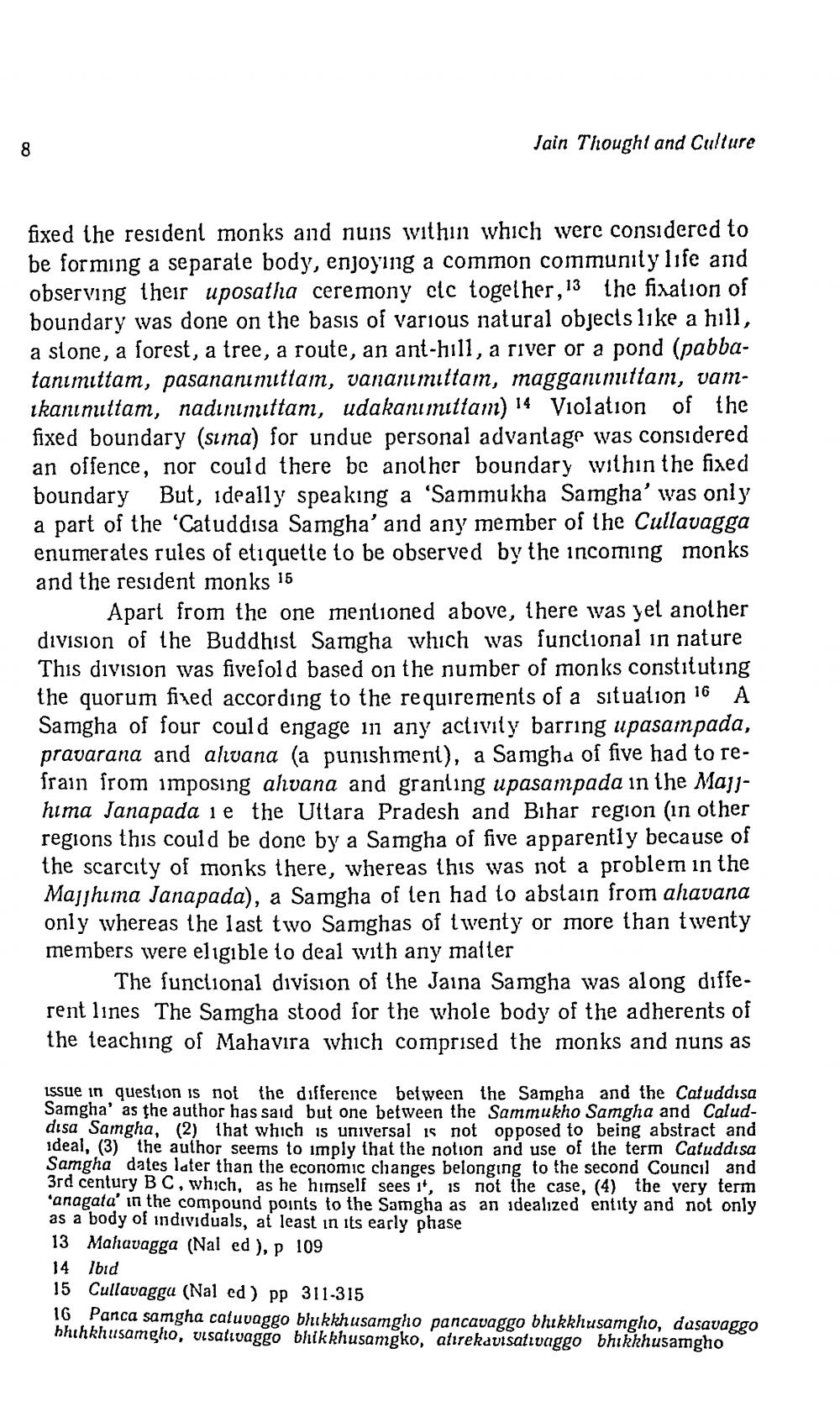________________
8
Jain Thought and Culture
fixed the resident monks and nuns within which were considered to be forming a separate body, enjoying a common community life and observing their uposatha ceremony ctc togelher, 13 the fixation of boundary was done on the basis of various natural objects like a hill, a stone, a forest, a tree, a route, an ant-hill, a river or a pond (pabbatanımıttam, pasananınuttain, vananımıttain, magganimuttam, vamikanınuttam, nadınlınıttam, udakanınıtlam) 14 Violation of the fixed boundary (sima) for undue personal advantage was considered an offence, nor could there be another boundary within the fixed boundary But, ideally speaking a 'Sammukha Samgha' was only a part of the 'Catuddısa Samgha' and any member of the Cullavagga enumerates rules of etiquette to be observed by the incoming monks and the resident monks 15
Apart from the one mentioned above, there was yet another division of the Buddhist Samgha which was functional in nature This division was fivefold based on the number of monks constituting the quorum fixed according to the requirements of a situation 16 A Samgha of four could engage 111 any activity barring upasampada, pravarana and ahvana (a punishment), a Samgha of five had to refrain from imposing ahvana and granting upasampada in the Majjhima Janapada ie the Uttara Pradesh and Bihar region (in other regions this could be done by a Samgha of five apparently because of the scarcity of monks there, whereas this was not a problem in the Majjhima Janapada), a Samgha of ten had to abstain from ahavana only whereas the last two Samghas of twenty or more than twenty members were eligible to deal with any matter
The functional division of the Jaina Samgha was along different lines The Samgha stood for the whole body of the adherents of the teaching of Mahavira which comprised the monks and nuns as
issue in question is not the difference between the Samgha and the Catuddısa Samgha' as the author has said but one between the Sammukho Samgha and Caluddusa Samgha, (2) that which is universal is not opposed to being abstract and ideal, (3) the author seems to imply that the notion and use of the term Catuddisa Samgha dates later than the economic changes belonging to the second Council and 3rd century BC, which, as he himself sees it. Is not the case, (4) the very term 'anagata' in the compound points to the Samgha as an idealized entity and not only as a body of individuals, at least in its early phase 13 Mahavagga (Nal ed ), p 109 14 Ibid 15 Cullavagga (Nal cd ) pp 311-315 16 Panca samgha catuvaggo bhikkhusamgho pancavaggo bhikkhusamgho, desavaggo bhihkhusamgho, ulsattuaggo bhikkhusamgko, atirekavisativaggo bhikkhusamgho




